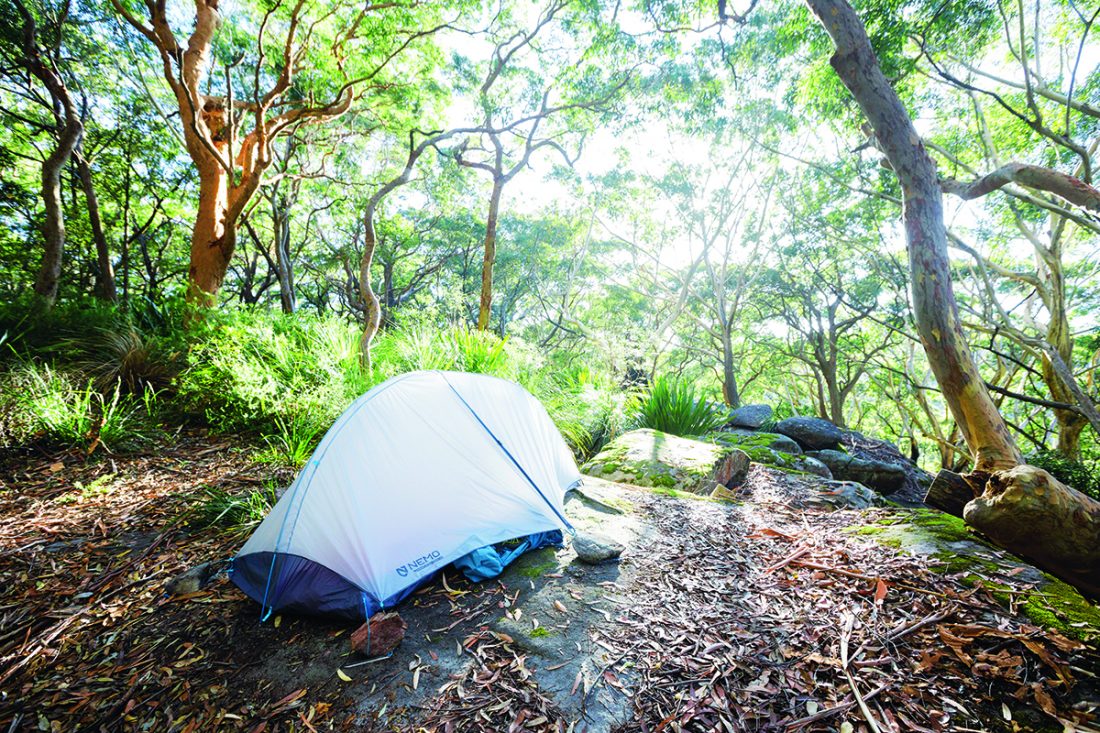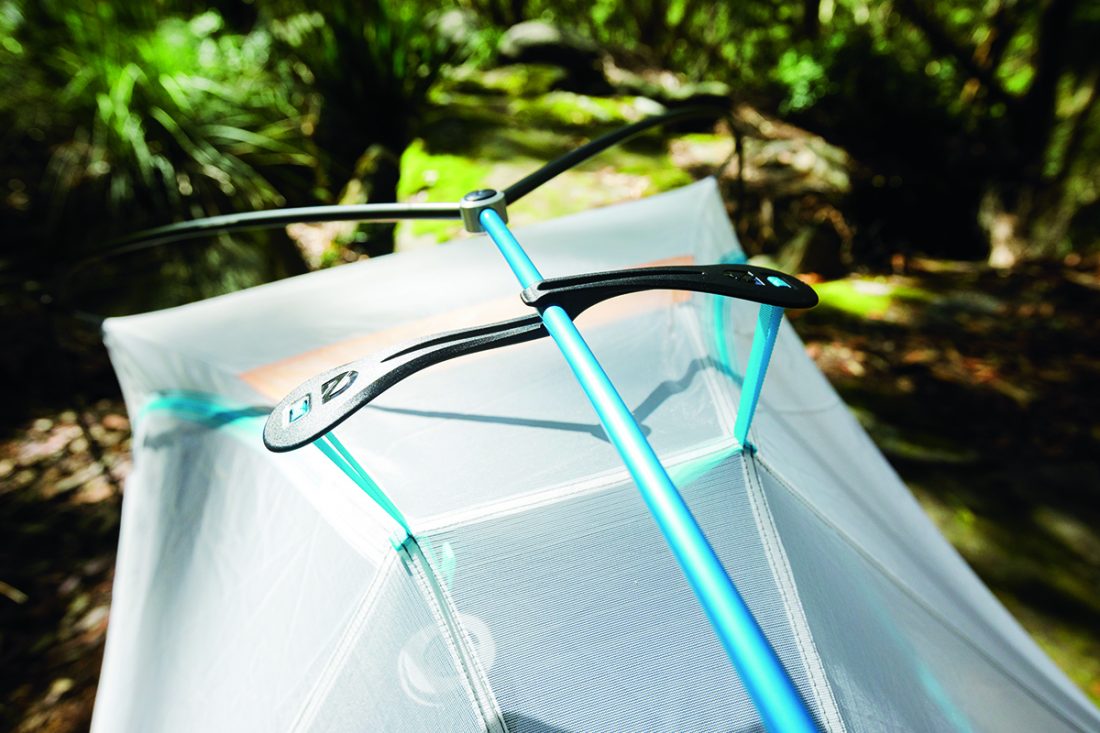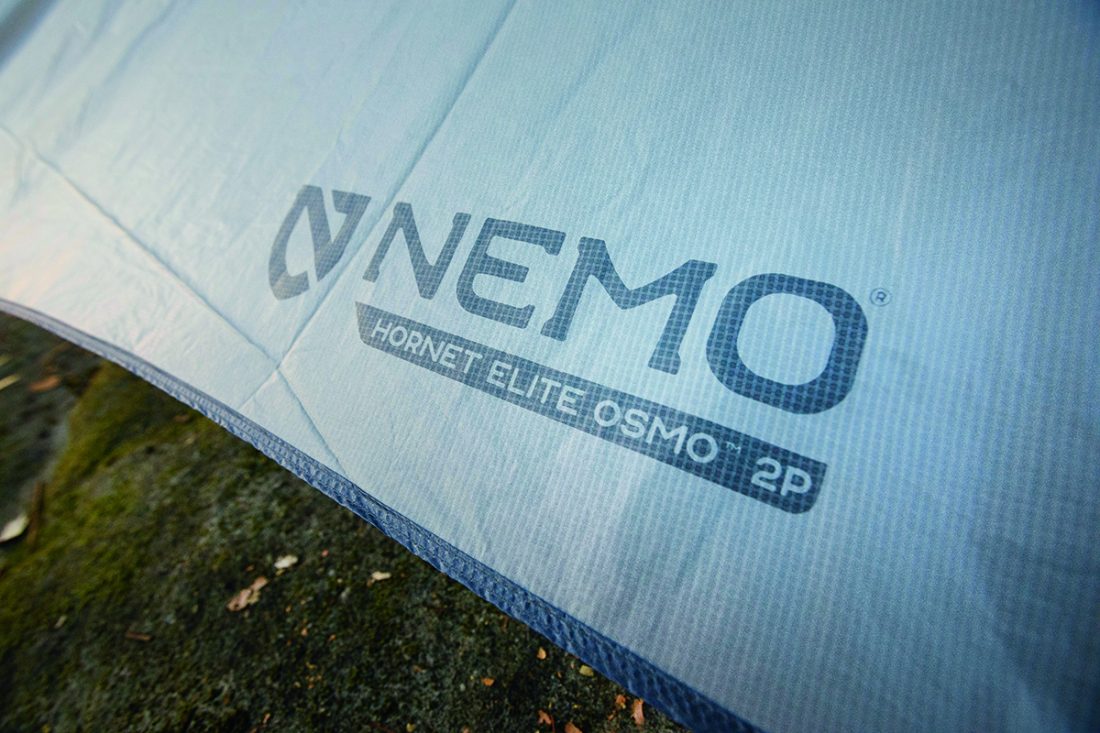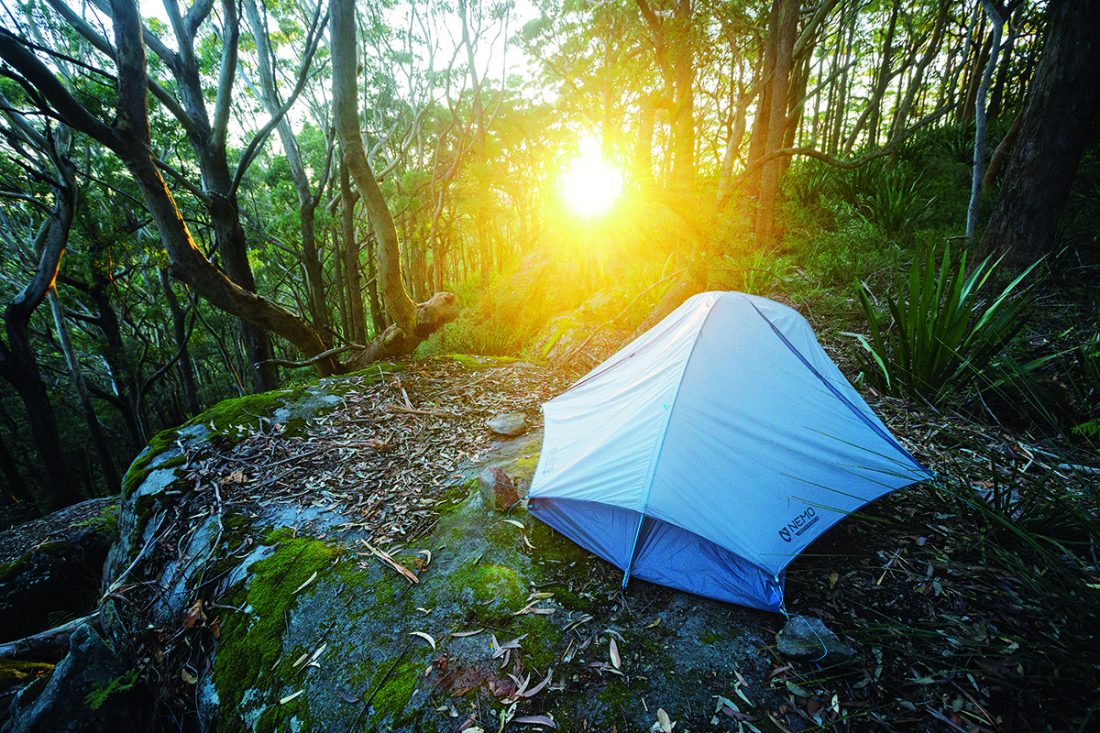
GEAR REVIEW
NEMO EQUIPMENT
HORNET ELITE OSMO 2P TENT
A marvel in ultralightweight engineering.
(This review originally featured in Wild #187, Autumn 2023)
By James McCormack
When it comes to gear, I’m a bit of a weight weenie. Partly that comes from my background as a professional adventure photographer, when to counteract the weight of all the heavy photographic equipment I’d lug around, I’d shave grams where possible so that my pack’s weight wasn’t too out of control. (Don’t worry, though; I’ve carried my share of 40+kg packs.) Equally, however, my weight-weenie tendencies stem from the more recent realisation of just how much more pleasant it is to head out with a sub-10kg pack, or even a sub-5 one. Seriously, it changes everything.

In the past, I’ve used tarps to shave serious grams, but with the advent of ultralightweight tents like Nemo Equipment’s Hornet Elite OSMO 2P, I’m not sure I have to. In fact, I flat out don’t. The two-person version of the tent, on my scales at least, weighs a scant 976g. That’s not to say you make no compromises, albeit far, far less than if you were using a tarp to shave grams. In many ways, the Hornet Elite is like a sports car—stripped down and lean, a leader in its field, but nonetheless not the burly vehicle you’d want to take 4WD-ing. You simply can’t have a sub-1kg tent and expect it to be as robust or as spacious as something weighing three times that weight. This is a tent that’s designed to be light and fast, and it makes a few compromises in achieving that goal. The interior height, for instance, is 94cm; not lofty, for sure. And the cross-beam measures just 22cm; again, it doesn’t make for a spacious interior. But it’s nonetheless adequate, and far from a coffin. Just don’t expect the Hornet Elite to be a roomy Taj Mahal, nor to have superfluous bells and whistles. This is a lean, mean, fighting machine. Personally, I wouldn’t want it any other way.

I want to be clear, though: While the Hornet Elite’s light weight makes it likely to become my go-to shelter for the bulk of my trips to more benign locales, I’d be unlikely to take it to, say, Tassie’s Western Arthurs. The tent is, for instance, only semi-freestanding; nonetheless, I found that on hard rock platforms, four well-placed rocks sufficed. The poles, too, are featherweight; well, DAC—the world leader in tent poles—technically calls the poles “Featherlite NFL Green”. Pick them up in your hand and you wonder how they can weigh so little. And then there are the fly and floor. Both have 1,200mm waterheads, and they feel so gossamer thin you wonder how they can keep water out. But keep out water they do. I happened to have the tent set up during a recent thumping of rain, when—and this is not a typo—we received 170mm in 90 minutes, and there were no leaks. It’s actually made me rethink doubts I have about 1,200mm tent flies. The floor, though, for durability reasons, probably does need some extra protection in the form of a footprint. You could DIY a superlight Tyvek one yourself, but Nemo sells one specifically for the tent. They also, BTW, sell an even lighter 1P version of the tent.

In sum, while not a tent for every outing, the sub-1-kilo Hornet Elite is an impressive achievement in ultralightweight design. Weight weenies, rejoice!
NEED TO KNOW
Product Class:
Two-person, ultralightweight, semi-freestanding 3-season tent
WEIGHT (2P AS TESTED):
976g
AREA:
2.49m2
DOORS & VESTIBULES:
2
FLOOR AREA:
2.5m2
VESTIBULE AREA:
0.6m2 (x2)
INTERIOR HEIGHT:
94cm
WATERHEAD (FLY & FLOOR):
1,200mm
RRP:
$899.85

